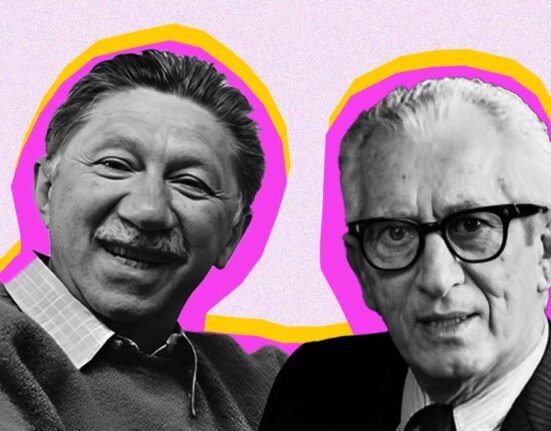“Your personal boundaries protect the inner core of your identity and your right to choices” –Gerard Manley Hopkins
A relationship tends to be fruitful only when it contributes to the growth of a better self. For relationships to survive, specific boundaries need to be consciously put into use. It is the same as the ring on your finger, not too tight (rigid) neither too loose (diffused) but just comfortable for yourself and the other person.
There are times when we agree to do any job for someone, even if we do not have enough time for that. We do not protest against jokes made on us thinking that we might lose the friend by showing that we are offended. We eventually do not let the other person know what we want or do not want due to the lack of assertiveness. All these happens when there is an absence of boundaries.
A boundary is a limit or space between the self and the other person. Such a division very specifically communicates everything that we want and that we do not. This doesn’t control anyone else but only ourselves. The purpose of setting boundaries is to take care of our self and our relationships with others. A complete lack of boundaries or diffused boundaries indicate that we do not have a strong sense of identity or our identity is enmeshed or entangled with someone else (Cleantis 2017). Life without boundaries is nothing but chaos and bound to be unsatisfying.
Why setting a boundary is so difficult?
Humans are social animals. All of us fear rejections from others. Hence we “bear up’’ with others many times even if it costs us our self-respect. Once we don’t value ourselves others also fail to do that for us. Lack of respect for someone might ultimately destroy the relationship, in a longer run. In spite of this, we constantly need validation and acceptance from others, and in the process, we often drift into a sea of other people’s feelings needs and opinion.
This generally happens that, we are unable to set effective boundaries because:
a. We feel guilty about taking care of our own needs. Sacrificing our needs for other people is more acceptable in some society.
b. We care too much about what other people think and feel, and are afraid of the consequences. The idea that people would only love and accept us if we are affirmative all the time, or in sync with others, is deeply rooted inside us and is called ‘contingent sense of self-worth’.
c. We are afraid of shattering our self-image of being “good and obedient”.
d. All the above 3 factors stem from the same place – our ‘beliefs’ or ‘scripts’ which were created in childhood. However, by not setting boundaries in life we damage the very relationship that we are trying to protect.

‘Without boundaries, we become resentful apathetic and less compassionate in relationships’ – Brene Brown
“Good fences make good neighbors”. – Robert Frost
How to set boundaries?
To get over ‘the disease to please’ we need to set boundaries. Do start setting simple but definite boundaries in a neutral but empathic tone. The following steps can be followed in reaching this goal.
• Self-Awareness to clarify personal boundaries firstly to the self
Our emotions and thoughts serve as a kind of compass for the boundary lines which are needed to be drawn, says therapist Julie de Azevedo Hanks. People need to tap into what they value and examine their own non-negotiable aspects. This is applicable in all facets of every individual’s life, whether it’s about maintaining a weekend hobby, or about spending time with a friend. To hone in on specific values, Hacker recommends asking yourself questions such as “what is important to me? What are my needs? Am I always striving for personal satisfaction and happiness?” Find out and pay special attention to situations, when you feel hurt repeatedly, undergo loss of energy, or your needs are not met. When you feel exhausted due to over functioning and taking in too many responsibilities. These are the times when you have to protect your self-respect, your right to privacy and peace. It is perfectly alright to say “no” to meaningless socialization or switch off gadgets for an hour every day whenever you feel so. Such boundaries are a part and parcel of each and every personal as well as professional relationships.
• The act of boundary setting and communicating through them:
The boundaries can be psychological, emotional or even physical. Use simple direct language while setting boundaries. For about a week keep a log of how many times you said: ‘yes’ to something that is not your absolute ‘Yes’. This list will help you to build awareness. Make a list of 5 things you would like to say “NO” to and start by thinking about these. Try not to be aggressive, but be polite and firm. For example –“my phone call times are between 8 am and 9 pm, kindly call in between” or “Even though the organization is important for me, I am unable to give voluntary service at the moment, please” or “You need to help me in the household work as well, as both of us are working parents” or to a teen- “I cannot give you money beyond my budget. You need to spend the money responsibly”
Do not defend, debate, and over explain giving too many reasons unnecessarily, as such an action might lead to manipulation and bargaining from the other side. When faced with resistance, repeat your statement or request. Back up your boundaries with actions, and stay strong. But don’t be rigid about them, you can modify or change them according to the situations, sometimes.

• Strengthen the internal boundaries-
In cases where we have weak internal boundaries, other frontiers become fragile as well. An internal boundary is like an invisible shield that prevents you from taking in a comment without checking it out first. For example, when someone accuses you of being selfish and rude; stop, and consider the statement before taking it in and reacting to it. Simply ask yourself “how much of this is true for me.” Do I need to do anything about it? When people try to keep quiet, absorb everything that others say about them, or trying to avoid confrontations then they end up weakening their internal self.
• Deal effectively with guilt and co-dependent behavior-
Cheryl Richarson says that guilt is the most common obstacle faced when we try to take care of ourselves, by making ourselves the priority. It is ok to say no or to back out of a commitment if it no more suits you. Sometimes, it’s okay to tell people that your priorities have changed.
• Co-dependence does not refer to all caring behaviour or feelings
One of the distinctions that healthy empathy and caregiving is a conscious choice, whereas for co-dependents the actions are compulsive. The Codependent person is someone who is not able to balance other demands on them and their own needs. Research says that co-dependence often leads to one person being abusive or in control. Such a behaviour supports or enables another person’s addiction, poor mental health, immaturity, irresponsibility or underachievement Codependents often find themselves in relationships where the primary role is that of rescuer, supporter, or confidante. Codependency can occur in any type of relationship, including family, work, friendship, also romantic relationships. An overwhelming desire for acceptance and affection, with low self-esteem, is a consistent personality pattern in co-dependents. Hence setting boundaries becomes next to impossible for codependents. They go for extreme sacrifices to satisfy others in a relationship. There is a degree of unhealthy clinginess and needy behavior. A parent can also be codependent towards their children. Some research suggests that emotionally abused parents or neglecting parents, in their teens are more likely to encounter codependent relationships.
Thus personal boundaries are the limits we set for ourselves as individuals in relationships. Says Psychotherapist Deborah Hecker. “They protect our sense of personal identity and help guard against being overwhelmed by the demands of others”. Contrary to the long-held belief that two people “complete” each other, relationships are healthier and more sustainable when each person maintains their own identity while the partnership is built on mutual respect, trust, and growth. No wonder in a broken relationship one of them is found saying: “I sacrificed so much for him/her, did everything to make him /her happy, but then why did he/she leave me”
The answer is in the above process probably a sense of identity which is crucial for mutual respect is lost.” Once we get into the habit of setting boundaries, life becomes easier, the relationship becomes more enjoyable, and we are happier in our journey to self-actualization. When we put ourselves first, we are completely available to others without anger or resentment.












Leave feedback about this